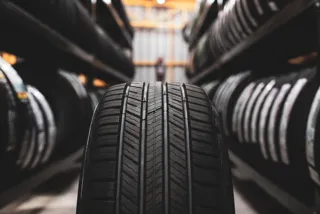Q:
How do I understand tyre labelling?
A:
 The tyre labelling scheme can be a useful tool for fleet managers comparing tyres for wet grip, fuel efficiency and noise performance.
The tyre labelling scheme can be a useful tool for fleet managers comparing tyres for wet grip, fuel efficiency and noise performance.
It was introduced under the European Tyre Labelling regulation, with tyres rated from A to G.
Steve Howat, general manager – technical services at Continental, said a vehicle fitted with a set of A-graded tyres could potentially provide a fuel saving of about 7.5mpg compared with one fitted with G-rated tyres.
A-grade tyres also deliver a 30% improvement in braking distance compared with G-rated ones, he adds.
However, Jamie McWhir, customer engineering support manager at Michelin, says: “While an at-a-glance look at a tyre label can help inform a fleet manager’s decision, the labels should only be a rough guide.”
Fleet managers should instead focus on identifying the demands their fleet vehicles face, and what policy would offer them the lowest whole-life costs – all with the assistance of tyre manufacturers, he suggests.
Ricky Mitchell, at Apollo Vredestein, says fleets should consider wet handling, aquaplaning resistance, wet braking, dry handling, stability, dry braking, traction and cold weather performance.
Fuel efficiency
The fuel efficency rating is calculated based on the tyre's rolling resistance to the road.
Wet grip
This rating shows tyres that perform well in the wet, and have a reduced stopping distance.
Noise levels
Rated in decibels, with a corresponding scale of 3 sound levels. A single sound wave is the best rating.

















